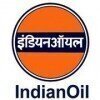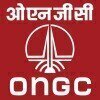
i
Kent
plc
Filter interviews by
Kent plc Interview Questions and Answers
26 Interview questions
In Saudi Aramco, various software tools are utilized for effective document control, ensuring compliance and efficiency.
SAP Document Management System (DMS) for managing project documents.
SharePoint for collaboration and document sharing among teams.
Aconex for project management and document control in construction projects.
Oracle Primavera for scheduling and document tracking.
Yes, I have knowledge about EDMS, which is essential for managing project documents efficiently.
EDMS stands for Electronic Document Management System, used to store, manage, and track electronic documents.
It helps in version control, ensuring that the latest document is always accessible.
Examples of EDMS include SharePoint, Documentum, and OpenText.
EDMS facilitates collaboration among team members by allowing simu...
I control revision of technical drawings through systematic tracking, version control, and clear communication with stakeholders.
Implement a version control system to track changes and revisions.
Use a standardized naming convention for files (e.g., DrawingName_v1.0).
Maintain a revision history log that details changes made, dates, and responsible personnel.
Ensure all stakeholders are notified of revisions and have...
Support types in piping systems include various configurations to manage stress and displacement, with distances varying by application.
Types of supports include: fixed supports, spring supports, and sliding supports.
Fixed supports restrict all movement and are typically placed every 10-15 feet.
Spring supports allow for vertical movement and are used in areas with thermal expansion.
Sliding supports permit horizont...
Wet leg filling involves filling a differential pressure transmitter's wet leg with liquid for accurate measurement.
Identify the wet leg location and ensure safety protocols are followed.
Use a suitable filling liquid, typically water or a specific process fluid.
Connect a filling line to the wet leg and open the valve to allow liquid flow.
Monitor the filling process to avoid overfilling and ensure proper liquid lev...
Fabrication as per ISO drawing involves following the dimensions, tolerances, and specifications provided in the drawing.
Carefully study the ISO drawing to understand the dimensions and specifications required for fabrication.
Use appropriate tools and equipment to cut, shape, and assemble the materials according to the drawing.
Ensure that the final product meets the tolerances and quality standards specified in th...
I solve problems by analyzing the root cause, developing a plan of action, and implementing solutions effectively.
Identify the problem and gather relevant information
Analyze the root cause of the issue
Develop a plan of action to address the problem
Implement solutions effectively
Monitor and evaluate the effectiveness of the solutions
The Safety policy is approved and signed by top management.
Safety policy is approved and signed by top management or senior leadership.
Typically, the CEO, Managing Director, or equivalent high-ranking official signs the Safety policy.
The Safety Officer may be responsible for drafting the policy and ensuring it aligns with regulations and best practices.
Everyone in the workplace is responsible for safety, from management to employees.
Management is responsible for providing a safe work environment and enforcing safety policies.
Employees are responsible for following safety procedures and reporting any hazards or incidents.
Safety officers are responsible for conducting safety inspections, training employees, and ensuring compliance with regulations.
Interfaces in engineering projects refer to the points where different components or systems connect and interact with each other.
Interfaces between different engineering disciplines (e.g. mechanical, electrical, software)
Interfaces between different project stakeholders (e.g. clients, contractors, suppliers)
Interfaces between different project phases (e.g. design, procurement, construction)
Interfaces between diff...
Kent plc Interview Experiences
24 interviews found
I applied via Walk-in
Prior to interview some
Prior to interview some assignment provided.
(4 Questions)
- Q1. How much your salary expected?
- Ans.
My salary expectation is based on my qualifications, experience, and the industry standard for Safety Officers.
Consider my qualifications and certifications in the field
Take into account my years of experience in safety management
Research the average salary range for Safety Officers in the industry
Negotiate based on the responsibilities and expectations of the role
- Q2. What you know about the company?
- Ans.
The company is a leading construction firm specializing in infrastructure projects.
Specializes in infrastructure projects
Known for high safety standards
Has a strong track record of completing projects on time and within budget
- Q3. Who is Responsible for Safety?
- Ans.
Everyone in the workplace is responsible for safety, from management to employees.
Management is responsible for providing a safe work environment and enforcing safety policies.
Employees are responsible for following safety procedures and reporting any hazards or incidents.
Safety officers are responsible for conducting safety inspections, training employees, and ensuring compliance with regulations.
- Q4. Who will approved and sign in Safety policy?
- Ans.
The Safety policy is approved and signed by top management.
Safety policy is approved and signed by top management or senior leadership.
Typically, the CEO, Managing Director, or equivalent high-ranking official signs the Safety policy.
The Safety Officer may be responsible for drafting the policy and ensuring it aligns with regulations and best practices.
Lesson learend event will be discussed
Once the interview completed group dicussion will be conducted for share the selection process.
(2 Questions)
- Q1. Did you have experience in safety training?
- Ans.
Yes, I have extensive experience in safety training including conducting safety drills, developing safety protocols, and providing safety awareness training.
Conducted safety drills to prepare employees for emergencies
Developed safety protocols to ensure compliance with regulations
Provided safety awareness training to educate employees on potential hazards
Implemented safety measures to prevent accidents and injuries
- Q2. How you solve the problems?
- Ans.
I solve problems by analyzing the root cause, developing a plan of action, and implementing solutions effectively.
Identify the problem and gather relevant information
Analyze the root cause of the issue
Develop a plan of action to address the problem
Implement solutions effectively
Monitor and evaluate the effectiveness of the solutions
Interview Preparation Tips
(4 Questions)
- Q1. For instruments fitter related
- Q2. 5 and half years experience in kent plc
- Q3. For instruments fitter
- Q4. Instruments fitter
I appeared for an interview before Jul 2024, where I was asked the following questions.
- Q1. What is the commissioning procedure and testing process?
- Q2. What is the process for commissioning motor control centers (MCC) and circuit breakers?
- Q3. What is the operation of High Tension (HT) breakers?
Project Document Controller Interview Questions & Answers
posted on 16 Jun 2025
I appeared for an interview before Jun 2024, where I was asked the following questions.
- Q1. How u control revision of technical drawings?
- Ans.
I control revision of technical drawings through systematic tracking, version control, and clear communication with stakeholders.
Implement a version control system to track changes and revisions.
Use a standardized naming convention for files (e.g., DrawingName_v1.0).
Maintain a revision history log that details changes made, dates, and responsible personnel.
Ensure all stakeholders are notified of revisions and have acce...
- Q2. Which software you are using for Document control in Saudi aramco?
- Ans.
In Saudi Aramco, various software tools are utilized for effective document control, ensuring compliance and efficiency.
SAP Document Management System (DMS) for managing project documents.
SharePoint for collaboration and document sharing among teams.
Aconex for project management and document control in construction projects.
Oracle Primavera for scheduling and document tracking.
- Q3. Did you have any knowledge about EDMS?
- Ans.
Yes, I have knowledge about EDMS, which is essential for managing project documents efficiently.
EDMS stands for Electronic Document Management System, used to store, manage, and track electronic documents.
It helps in version control, ensuring that the latest document is always accessible.
Examples of EDMS include SharePoint, Documentum, and OpenText.
EDMS facilitates collaboration among team members by allowing simultane...
- Q4. Which previous organization you work for?
- Ans.
I previously worked at ABC Construction, where I managed project documentation and ensured compliance with industry standards.
Managed documentation for multiple large-scale construction projects, ensuring timely updates and accuracy.
Implemented a digital filing system that improved document retrieval time by 30%.
Collaborated with project managers and engineers to maintain compliance with regulatory requirements.
Conduct...
- Q5. In your previous organization how work flows?
- Ans.
In my previous organization, workflows were structured to ensure efficient document management and collaboration across teams.
Document creation: Team members would draft documents using standardized templates to maintain consistency.
Review process: Documents were circulated for review among relevant stakeholders, ensuring feedback was incorporated.
Version control: We utilized a document management system to track revis...
(2 Questions)
- Q1. What is your job roles
- Q2. How to manage your team

(3 Questions)
- Q1. Preventive Maintenance of All Kinds of H.V & LV Breakers, Motors, Voltage Up To 33 KV & 11 KV & 6.6.KV /2400 KW ,Transformer(15.75KV /230 KV ), Corrective Maintenance of HV/MV /LV Switches gears,VCB,AC...
- Ans.
Preventive and corrective maintenance of various electrical equipment including breakers, motors, transformers, and relays.
Perform regular maintenance on high and low voltage breakers, motors, and transformers.
Test and calibrate various protection relays for motors, transformers, and generators.
Conduct transformer oil BDV test, thermal scanning, and earth fault and prediction tests.
Terminate high voltage motors, instal...
- Q2. Preventive Maintenance of All Kinds of H.V & LV Breakers, Motors, Voltage Up To 33 KV & 11 KV & 6.6.KV /2400 KW ,Transformer(15.75KV /230 KV ), Corrective Maintenance of HV/MV /LV Switches gears,VCB,AC...
- Ans.
Preventive and corrective maintenance of various electrical equipment including breakers, motors, transformers, and relays.
Perform regular maintenance tasks on high and low voltage breakers, motors, and transformers.
Test and calibrate protection relays for motors, transformers, and generators.
Conduct transformer oil BDV tests, thermal scanning, and earth fault and prediction tests.
Terminate high voltage motors, install...
- Q3. Preventive Maintenance of All Kinds of H.V & LV Breakers, Motors, Voltage Up To 33 KV & 11 KV & 6.6.KV /2400 KW ,Transformer(15.75KV /230 KV ), Corrective Maintenance of HV/MV /LV Switches gears,VCB,AC...
- Ans.
Preventive and corrective maintenance of various electrical equipment including breakers, motors, transformers, switches, relays, and testing/calibration of protections.
Preventive maintenance of H.V & LV breakers, motors, transformers, switches, etc.
Corrective maintenance of HV/MV/LV switchgears, breakers, cubicles, etc.
Testing and calibration of various protection relays for motors, transformers, generators.
Transforme...
Interview Preparation Tips
KV & 6.6.KV /2400 KW ,Transformer(15.75KV /230 KV ), Corrective Maintenance of HV/MV /LV
Switches gears,VCB,ACB,MOCB,SF6 Breakers, Breaker cubicle, earthling Switches ,Generator
earthling Switch ETC. Testing and calibration of all kinds of protections Relay of High Voltage and
low Voltage Motors, Transformers ,Generator like Under Voltage Relay , locked Rotor Relay
,Differential Relay , Negative Phase Sequence Relay , Over current/Thermal Over Current Relay ,
Bucholz Relay , DGPT Relay ETC. Transformer Oil BDV Test, Thermal Scanning , Earth fault and
Prediction Test of Equipment .Termination of high Voltage Motors , Cable Errection , Installation of
Motors, and Trial/Load Test. Transformer Oil Extracting ,Testing (BDV), Oil Filtration .
Equipments Of Oil & Gas Plant , Chlorine Plant, co2 plant
Maintenance of battery Banks , UPS for auxiliary Start UP and Control Voltage call safe supply.
EQUIPMENT UNDER RESPONSIBILITIES :
MV MOTORS UPTO 2400 KW / 3 PHASE / 6600V / 60HZ
LV MOTORS UPTO 125 KW / 3PHANSE / 380V / 60HZ
RECTIFIER FOR CL2 PLANT CELL 3000 AMP / 380/60HZ / 120V DC
TRANSFORMERS 15.75 KV / 230 KV – 150MVA
TRANSFORMERS 15.75 KV / 6.6KV – 80 MVA
TRANSFORMERS 6.6KV / 380V – 800KVA
BATTERY BANKS 2000 AMP
INVERTER / CHARGER 2000 AMP SWITCH GEARS MV 6.6 KV / 3500 AMP SWITCH
I applied via Company Website and was interviewed in May 2023. There were 2 interview rounds.

(5 Questions)
- Q1. 1.What is an inspection? 3.What are the responsibilities of the QC Inspector? 3.What is the various inspection requireds a quality control Inspector should be familiar with? 4.What should be th...
- Q2. 1. What is the difference between inspection,witness,and hold point? 2. What are the different kinds of certification?
- Q3. What are QCP, QMP and ITP?
- Q4. What is the final RFI? when it shall be raised?
- Q5. What is document marking? Brief it's color coding?
Skills evaluated in this interview
I applied via Referral and was interviewed before Jun 2023. There were 2 interview rounds.
(3 Questions)
- Q1. What are the various interfaces in Engineering projects?
- Ans.
Interfaces in engineering projects refer to the points where different components or systems connect and interact with each other.
Interfaces between different engineering disciplines (e.g. mechanical, electrical, software)
Interfaces between different project stakeholders (e.g. clients, contractors, suppliers)
Interfaces between different project phases (e.g. design, procurement, construction)
Interfaces between different...
- Q2. Describe the projects that you have worked on.
- Q3. What are the various standards used in the Oil & Gas Industry
- Ans.
Various standards used in the Oil & Gas Industry include API, ASME, ISO, and NACE.
API (American Petroleum Institute) standards cover various aspects of the industry such as drilling, production, and transportation.
ASME (American Society of Mechanical Engineers) standards focus on equipment design and safety.
ISO (International Organization for Standardization) standards ensure quality and consistency in processes and pr...
(2 Questions)
- Q1. Self Introduction
- Q2. Current & Expected remuneration
(1 Question)
- Q1. Behavioral and management related
(1 Question)
- Q1. E3D Draw Module
Top trending discussions






Kent plc Interview FAQs
Some of the top questions asked at the Kent plc interview -
The duration of Kent plc interview process can vary, but typically it takes about less than 2 weeks to complete.
Tell us how to improve this page.
Kent plc Interviews By Designations
- Kent plc Electrical Technician Interview Questions
- Kent plc Mechanical Technician Interview Questions
- Kent plc Senior Electrical Technician Interview Questions
- Kent plc Piping Foreman Interview Questions
- Kent plc Workman/Foreman/Technician Interview Questions
- Kent plc Senior Engineering Project Manager Interview Questions
- Kent plc Safety Officer Interview Questions
- Kent plc Project Engineer Interview Questions
- Show more
Interview Questions for Popular Designations
- Electrical Technician Interview Questions
- Team Lead Interview Questions
- Software Developer Interview Questions
- Business Analyst Interview Questions
- Senior Engineer Interview Questions
- Java Developer Interview Questions
- Senior Software Engineer Interview Questions
- Manager Interview Questions
- Show more
Overall Interview Experience Rating
based on 17 interview experiences
Difficulty level
Duration
Interview Questions from Similar Companies
Kent plc Reviews and Ratings
based on 286 reviews
Rating in categories
|
Process Engineer
20
salaries
| ₹5 L/yr - ₹12.5 L/yr |
|
Electrical Engineer
13
salaries
| ₹10 L/yr - ₹20.9 L/yr |
|
Instrumentation Technician
12
salaries
| ₹6.2 L/yr - ₹12 L/yr |
|
Piping Engineer
9
salaries
| ₹6.8 L/yr - ₹13.5 L/yr |
|
Principal Engineer
9
salaries
| ₹24 L/yr - ₹38.5 L/yr |

Reliance Industries

Indian Oil Corporation

Shell

Oil And Natural Gas Corporation
- Home >
- Interviews >
- Kent plc Interview Questions












